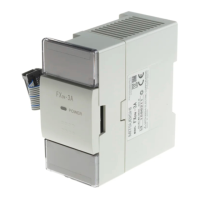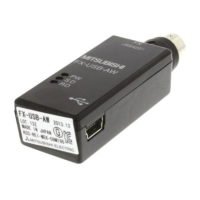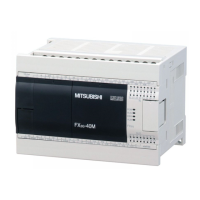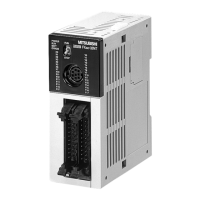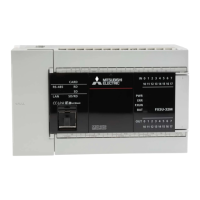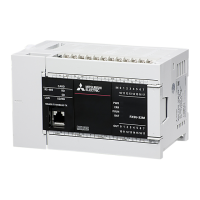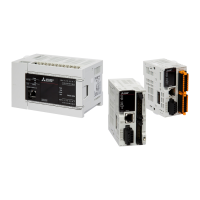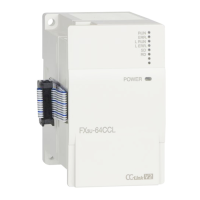7 Buffer Memory
7.3 Positioning Parameters
69
FX3U-1PG User's Manual
1
Introduction
2
Specification
3
System
Configuration
4
Installation
5
Wiring
6
Before Starting
Positioning
Operation
7
Buffer Memory
8
Manual Control
9
Positioning
Control
10
Program
Example
7.3.20 [BFM#47, #46] Zero return speed (creep)
In the mechanical zero return, the operation speed after the near point signal (DOG) input is set.
→ For details on the mechanical zero return, refer to Section 8.3.
Point
• Set the zero return speed (creep) in the range between the bias speed and the maximum speed. However,
set the speed at the zero return speed (high speed) or slower.
• When the zero return speed (creep) is at the maximum speed or higher, the operation is executed at the
maximum speed. When the zero return speed (creep) is at the bias speed or lower, the operation is
executed at the bias speed. However, if the bias speed is 0, the operation is executed at 1 Hz.
• To increase the stop accuracy at the zero position, it is recommended to keep the creep speed as low as
possible.
• When the positioning parameter is used, use the zero return speed (BFM#11).
7.3.21 [BFM#48] Number of zero-point signal for zero return
Set the zero-point signal count that is used for the mechanical zero return.
→ For details on the mechanical zero return, refer to Section 8.3.
Point
• The zero-point signal count is detected at the falling edge.
• When the zero-point signal count is set to 0, the operation immediately stops when the zero-point signal
count is started. In this case, the operation immediately stops from the zero return speed (high speed or
creep). If there is a possibility to damage the machine due to the immediate stop, be careful with the
following points.
- Set the zero return speed (creep) at a safe speed.
- Set the zero-point signal count start point at DOG backward end.
- Design the DOG such that the speed can be reduced to the zero return speed (creep) until the start of
the zero-point signal count.
• When the positioning parameter is used, use the number of zero-point signal for zero return (BFM#12).
7.3.22 [BFM#50, #49] Zero-point address
Set the zero-point address when the zero return operation is completed.
When the zero return operation completes, this value is written to the current address.
→ For details on the mechanical zero return, refer to Section 8.3.
Point
• Value is in user units and includes the position data multiplier.
• When the positioning parameter is used, use the zero-point address (BFM#14, #13).
BFM No.
Description R/W Default
High order
16bit
Low order
16bit
#47 #46
Setting range: 1 to 2,147,483,647 (user unit)
The value must be within the range from 1 to 200,000 Hz when converted to pulse data.
R/W K1,000
BFM No.
Description R/W Default
High order
16bit
Low order
16bit
- #48 Setting range: 0 to 32,767 R/W K10
BFM No.
Description R/W Default
High order
16bit
Low order
16bit
#50 #49
Setting range: -2,147,483,648 to 2,147,483,647 (user unit)
The value must be within the range from -2,147,483,648 to 2,147,483,647 PLS when
converted to pulse data.
R/W K0
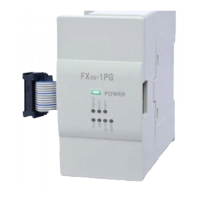
